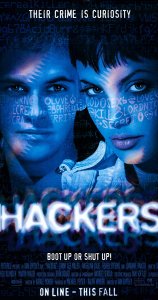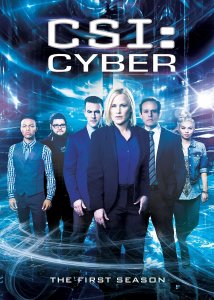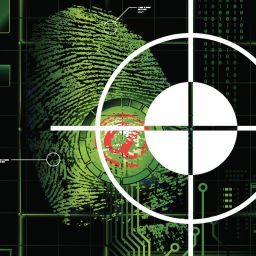Why can’t Hollywood get it right when it comes to cybercriminals and what they do
 Hollywood for the longest time has held a certain image of cybercriminals. Writers and producers have recreated from how cybercriminals look, how they go about committing crimes and what their motivations are. However as is the case with most things Hollywood, there are some major inaccuracies that are far from the actual truth. The narrative at times can be played out something like this: a loner hacker takes on a large and corrupt corporation. The cybercriminal drains their enemies bank accounts all while haunting their victims’ screens with taunting images of “You’ve been hacked”.
Hollywood for the longest time has held a certain image of cybercriminals. Writers and producers have recreated from how cybercriminals look, how they go about committing crimes and what their motivations are. However as is the case with most things Hollywood, there are some major inaccuracies that are far from the actual truth. The narrative at times can be played out something like this: a loner hacker takes on a large and corrupt corporation. The cybercriminal drains their enemies bank accounts all while haunting their victims’ screens with taunting images of “You’ve been hacked”.

So that makes great TV or a movie, but the reality couldn’t be more different.
Cybercriminals what how they behave and what makes them tick
You may or may not have seen films like “The Net,” “Blackhat,” and “Swordfish” do their thing and portray cybercriminals as either criminal masterminds who are scheming the perfect crime or as solo hackers on the outside, hell bent on masterminding the ultimate cyberattack. In reality, cybercriminals…well, they just are not that. See in contrast, many cybercriminals operate within hierarchical organizations among as you guessed it, their co-workers, managers, and even top C-level personnel. Trust me when I say, cybercrime is a profitable business, causing $600 billion in losses each year as of 2019.
The film industry likes to portray hackers as sort of these cybercrime wunderkind, with the skillset to perform a near take down of an organization’s IT infrastructure in less than 5 minutes. These types of attacks typically are mapped out with tons of planning.
When it comes to a cybercriminals psychology though, there are certainly Mr. Robot-esque cybercriminals who participate in hacktivism to protest or further push some agenda but things are not painted so clearly in reality. Hollywood loves to paint these criminals and romanticize them, but truth is, they have the same motivation as your everyday analogous criminals.
The cybercrime methodology
Another way that Hollywood portrays the activities of cybercriminals inaccurately is through the actual methodology that they employ. Television and film show hacking as sort of this big battle between two genius hackers, who take jabs at each other’s systems until inevitably one is victorious. I remember seeing this hilarious hacker battle in the TV show, NCIS where for whatever reason, two people begin using the keyboard at once in an effort to out-hack the digital intruder.
In TV shows and movies, GUI (graphical user interfaces) do not fair all that more realistic either. Usually they are portrayed as everything from strange three-dimensional cityscapes in the 90’s movie “Hackers” to floating blobs in “Skyfall”. All this is obviously far from the truth and more than likely more a means to garner excitement and viewership for the sake of entertainment.
Attacks in real-time
In the real world though, hackers are not generally targeting specific computers in real-time. It actually is quote the contrary on some occasions as cybercriminals are executing distributed denial-of-service attacks and ransomware attacks. Such large-scale acts are done at the highest level of secrecy in order to maximize their usefulness all while reducing the chances the cybercriminals will actually be caught.
Anyone can and will be a target for hackers
In the world of cinema, cybercriminals usually carry out attacks on either large corporations or the federal government because well, that’s what hackers do. While it can be true that the private sector and the U.S. government deal with their fair share of cyberattacks, many other entities (including individual people) can become the targets of serious cybercrimes. Many times, regular citizens who are going about their ways on the web can be targeted and fall suspect to such malicious attacks.
Healthcare is a major target
The WannaCry Worm was a detrimental piece of malicious ransomware that seriously affected huge companies and governments across the world. However, one of the most seriously damaged sectors by the ransomware was the healthcare industry. It was reported that in the UK alone, WannaCry hit about 16 or so different hospitals. In this attack, patient data was held hostage and would be returned for a pretty price. In addition to this, dozens of additional hospitals around the globe had their valuable private patient data compromised.

The healthcare sector is a growing target for cybercriminals due to the high value of data that can be obtained through hacking. Items like credit cards and social security numbers can fetch a good price on the black market, but even a partial electronic health record can sell up to $50. However going back to Hollywood, you won’t see this and that’s because movies need you to relate to the hacker character.
So in closing
At the end of the day, it’s important to question whether it really matters if Hollywood is portraying the activities of cybercriminals inaccurate or not. I mean, one could argue it’s all fictional work and should be taken at times with a grain of salt. If hacking is depicted too realistically, there is a chance that viewers might try to emulate the actions they see on screen. In the real world, cybercriminals aren’t the noble Robin Hood-type characters that Hollywood wants them to be; they are criminals doing unjust things like causing damage to people’s lives in the pursuit of money and power. Hackers are dangerous. Cyber crimes are indeed a real thing that cause detrimental harm to anyone who falls prey to them. So for now–let us separate what we see on the silver screen (or small screen) from the reality of what really goes on.
So, lights, camera and action!
Like and follow us on social media (we are on LinkedIn, Facebook, Twitter and Instagram).
Your business matters. Protect it.
The film industry likes to portray hackers as sort of these cybercrime wunderkind, with the skill set to perform a near take down of an organization’s IT infrastructure in less than 5 minutes. No, these types of attacks typically are mapped out with tons of planning.
















